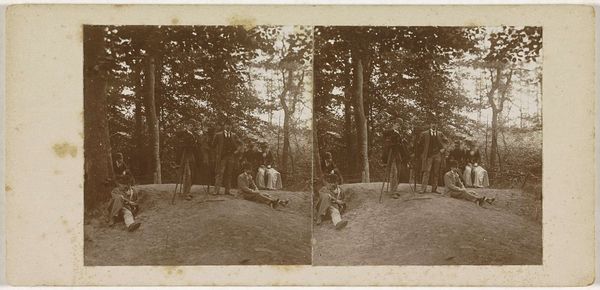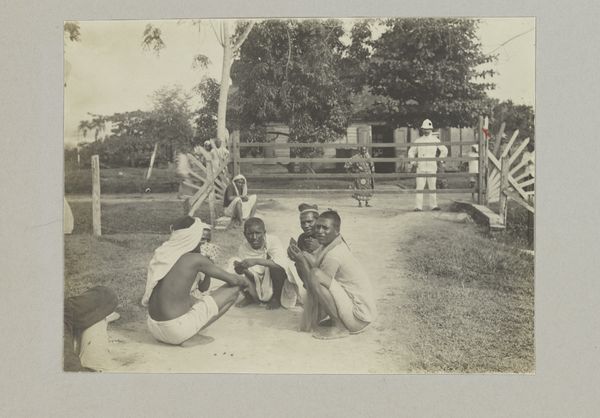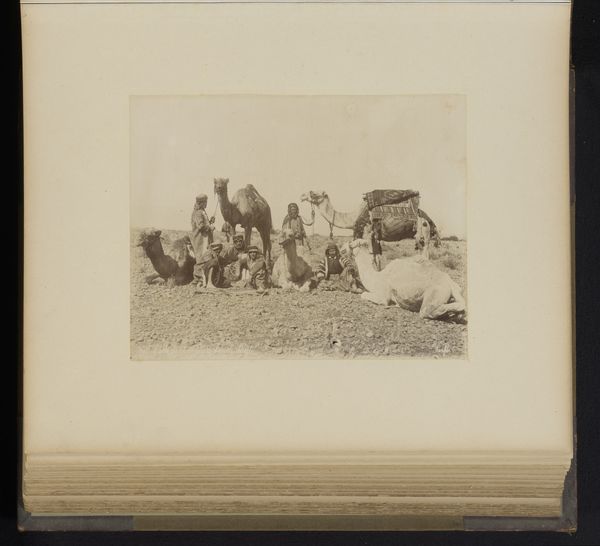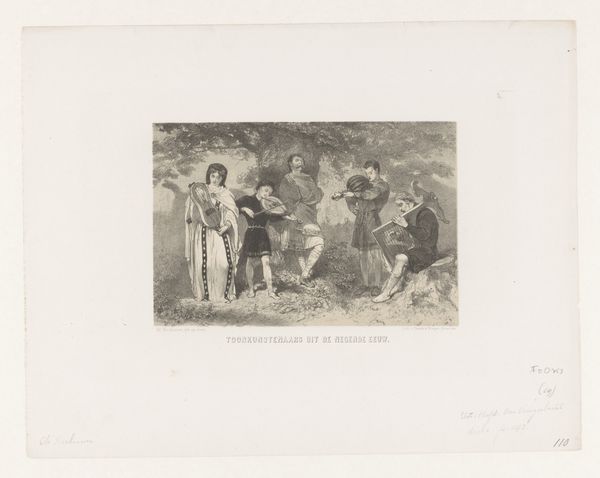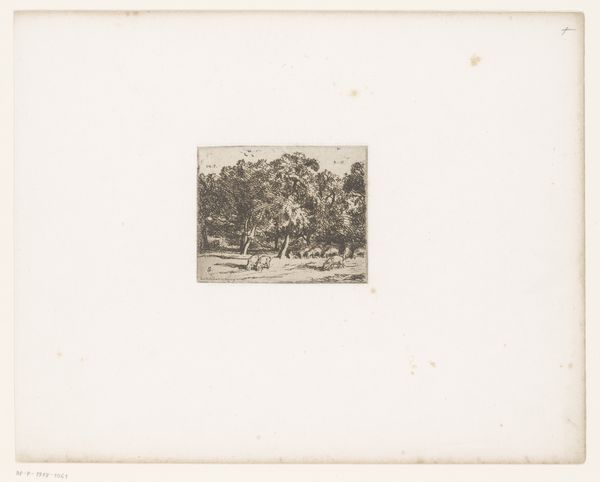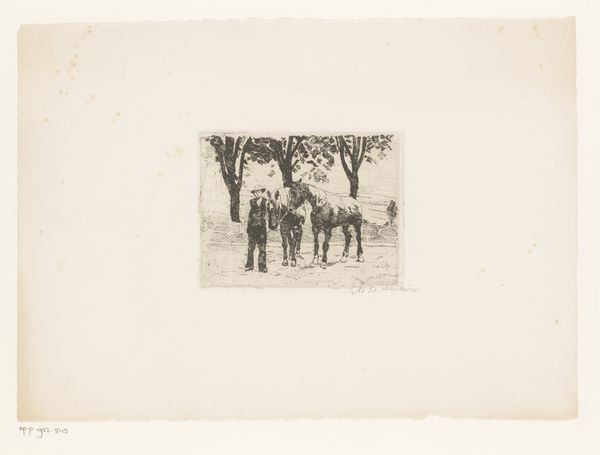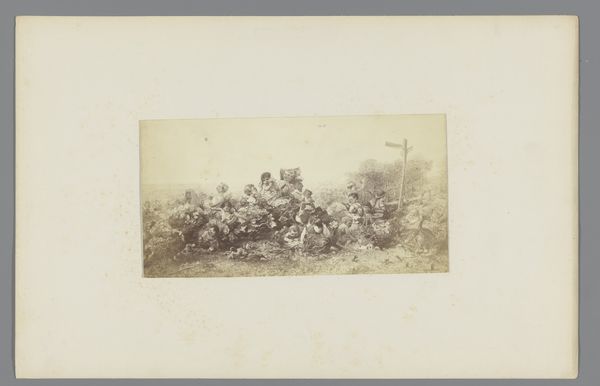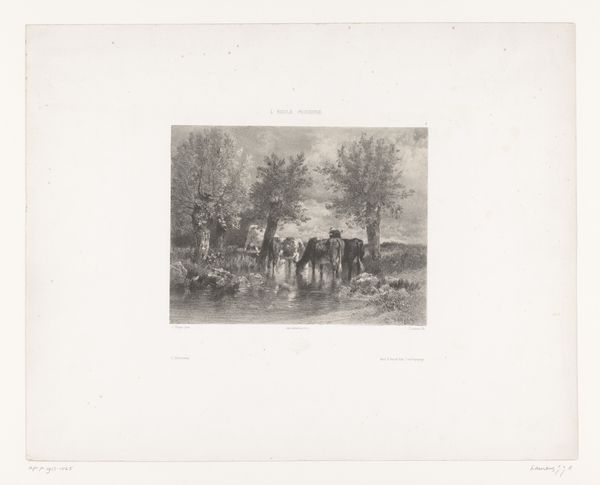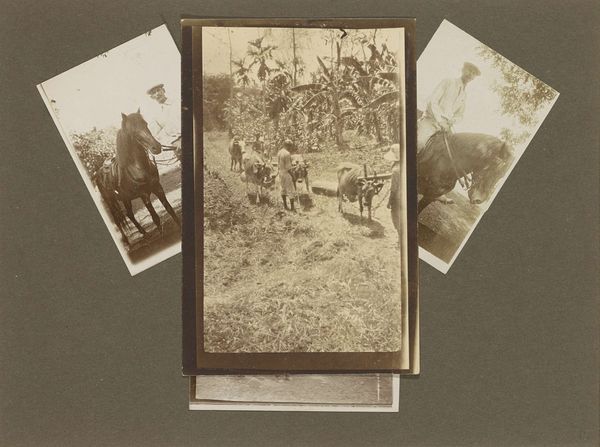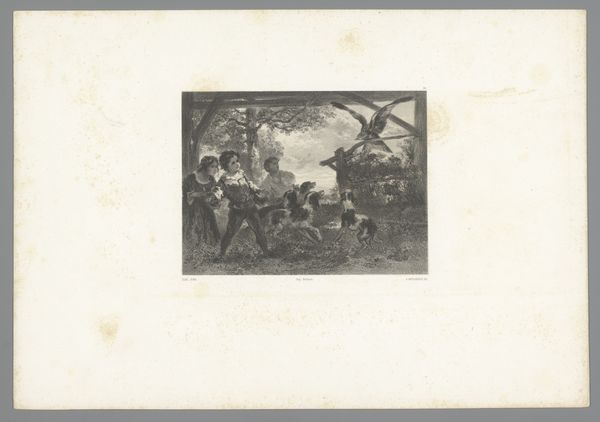
photography, gelatin-silver-print
#
portrait
#
pictorialism
#
landscape
#
photography
#
group-portraits
#
gelatin-silver-print
#
realism
Dimensions: height 72 mm, width 72 mm, height 314 mm, width 450 mm
Copyright: Rijks Museum: Open Domain
Curator: This intriguing gelatin silver print from 1889, by Paul Güssfeldt, is titled "Keizer Wilhelm II en zijn reisgezelschap"—or, "Kaiser Wilhelm II and his traveling companions." It’s a landscape and group portrait, documenting the German Emperor's entourage on their journey. Editor: My immediate impression is how the soft focus lends a sense of timelessness, even nostalgia, to the photograph. The circular frame further enhances this dreamlike quality, making the figures seem distant and ethereal despite the realistic subject. Curator: Precisely. Examining this piece through the lens of history and power, we must acknowledge Wilhelm II's complex role. His reign marked a period of aggressive German expansionism, often steeped in oppressive power dynamics concerning class and nationality. Picturing him in a seemingly relaxed and bucolic setting prompts questions about how rulers craft images of themselves and how they curate an identity divorced from governmental decision-making. Editor: That's a fascinating point. However, stylistically, it’s worth noting Güssfeldt’s use of light and shadow to create depth. Observe how the figures become less defined as they recede into the background, a masterful play of perspective within the soft focus aesthetic. Curator: I agree with you there. I also find the staging very deliberate. The positioning of the emperor within this company is a curated projection of power, and looking closely we can think through how masculinity also works on display. Editor: Returning to the formal aspects, notice the muted tones, primarily variations of brown and sepia. This monochrome palette simplifies the landscape, focusing the viewer's attention on the forms and the spatial relationships between them. Curator: But we can't separate the aesthetics from the underlying sociopolitical messaging. It is difficult, especially knowing what was on the horizon for Wilhelm and for Europe more broadly, to view it outside of an interrogation of nationalism, class and control. Editor: And I feel, by simplifying it, it enhances the impact of each choice—and the underlying statement—by presenting its elements economically. Ultimately, the interplay of form and content gives depth and complexity to the piece, opening avenues for discussion on the social implications behind the artwork. Curator: And reminding us that aesthetic decisions are often imbued with hidden layers of personal power, privilege, and political undertones.
Comments
No comments
Be the first to comment and join the conversation on the ultimate creative platform.

